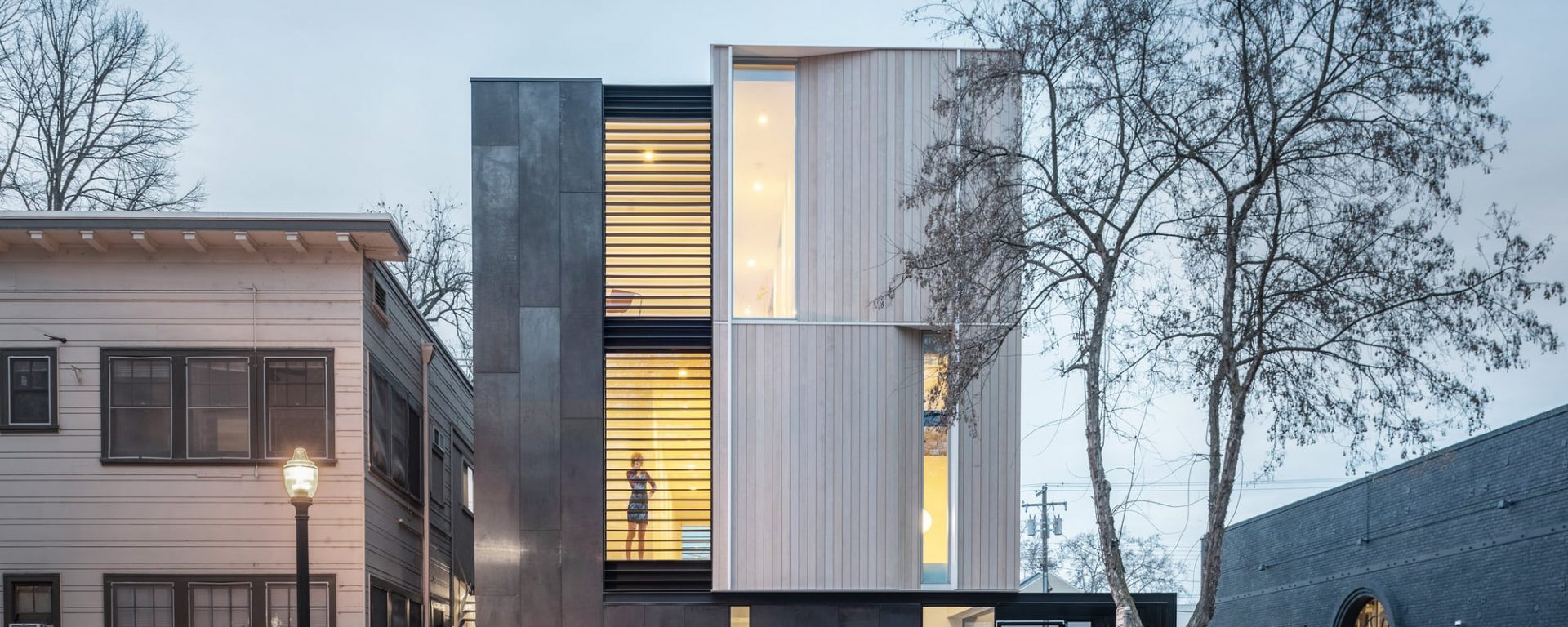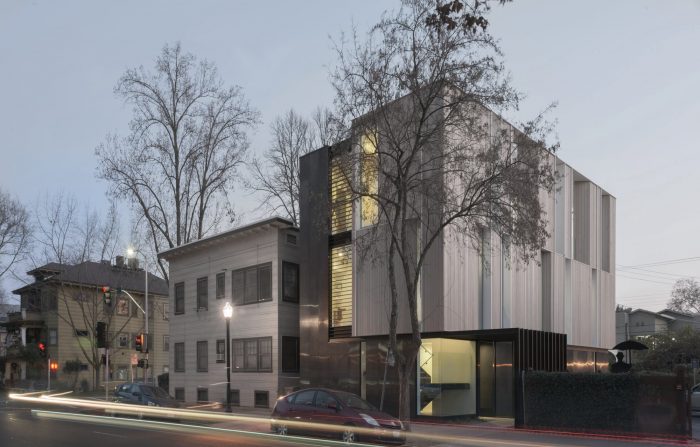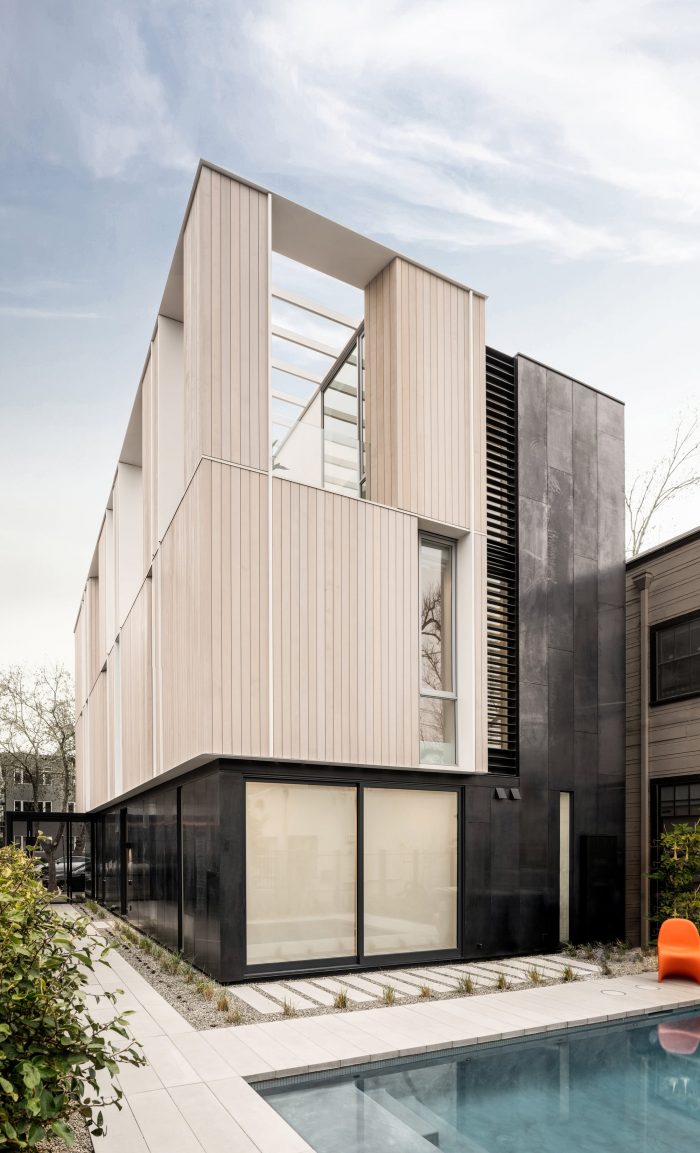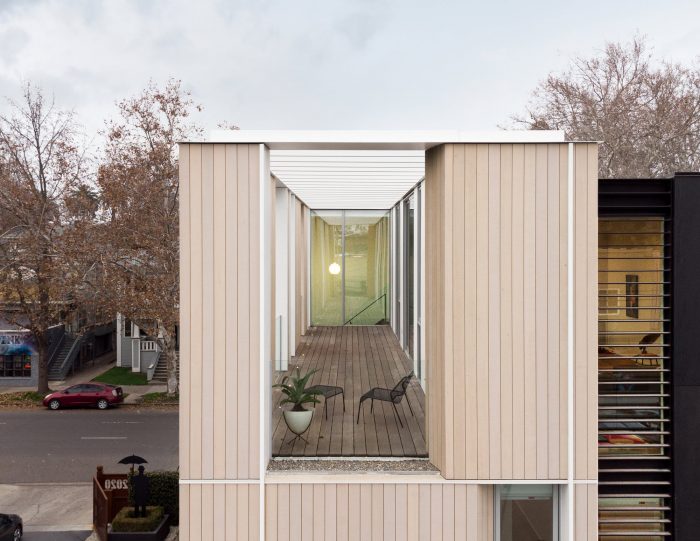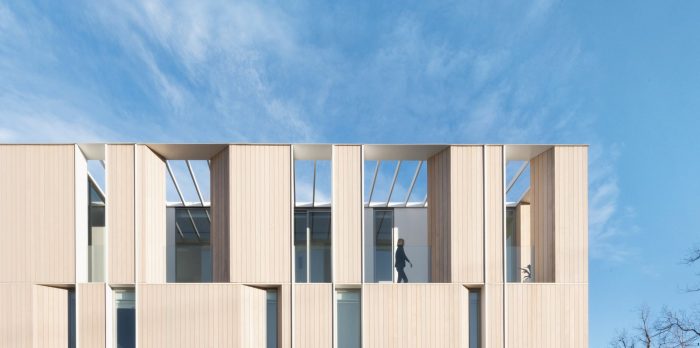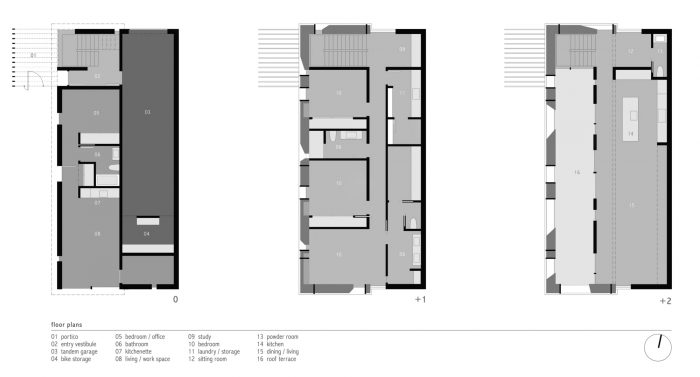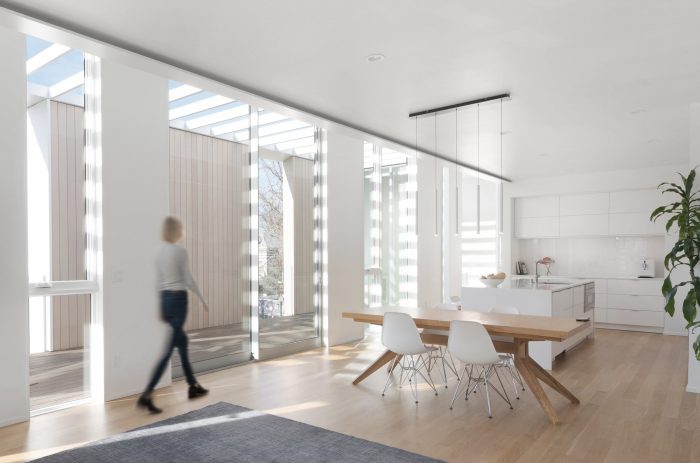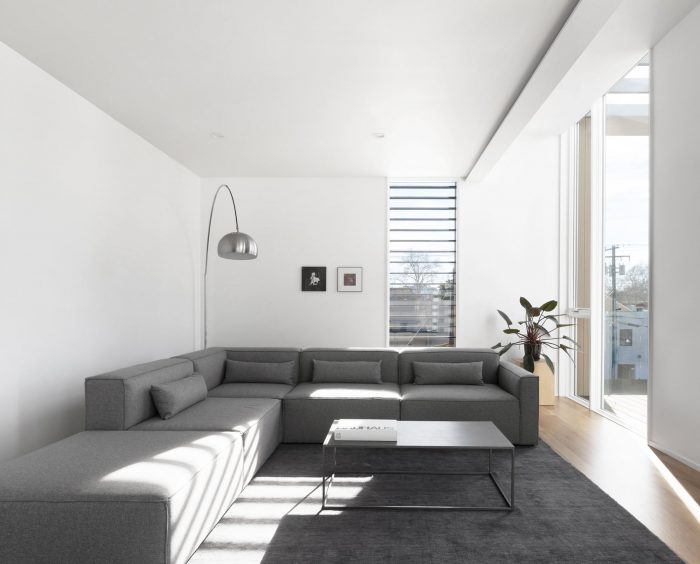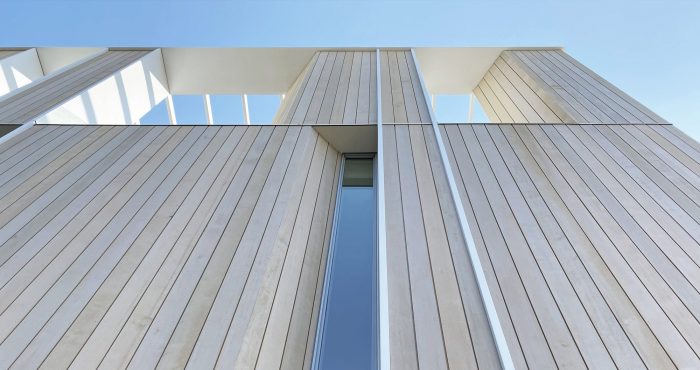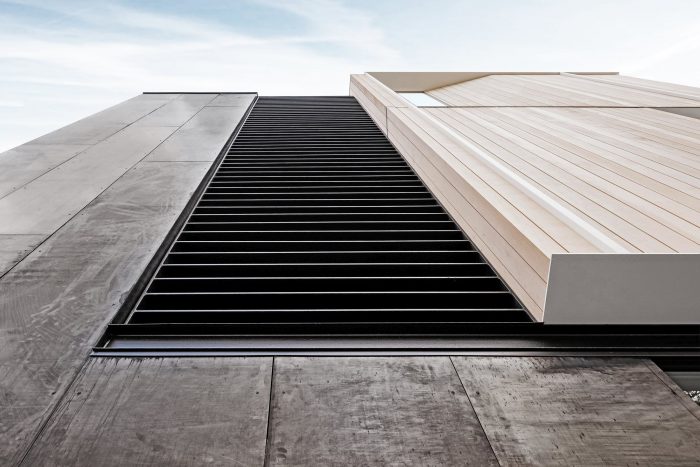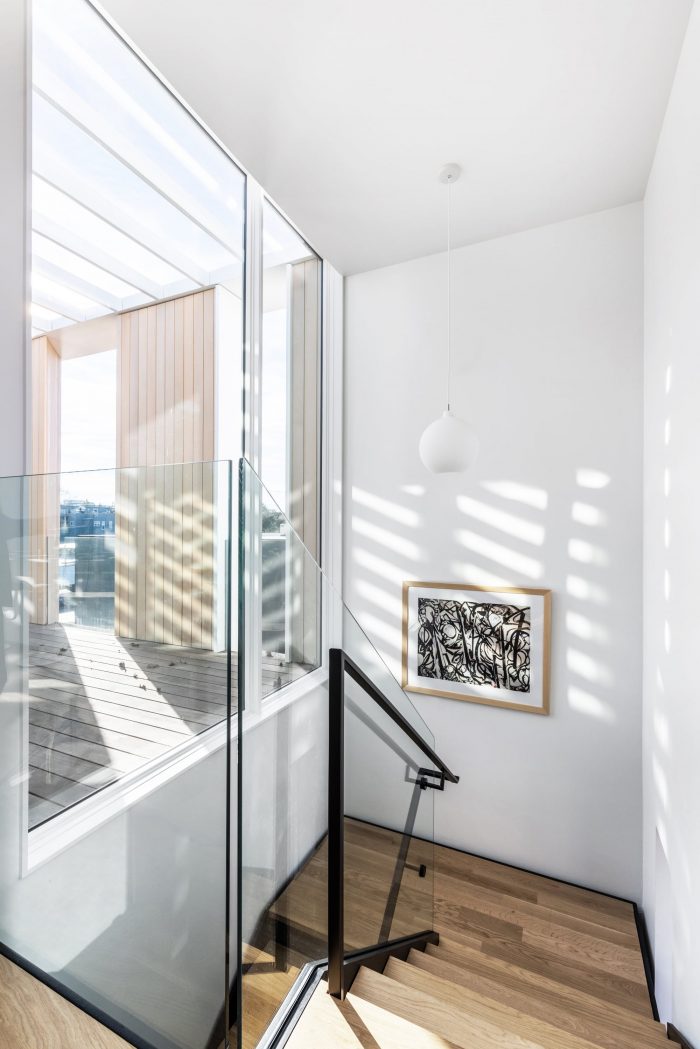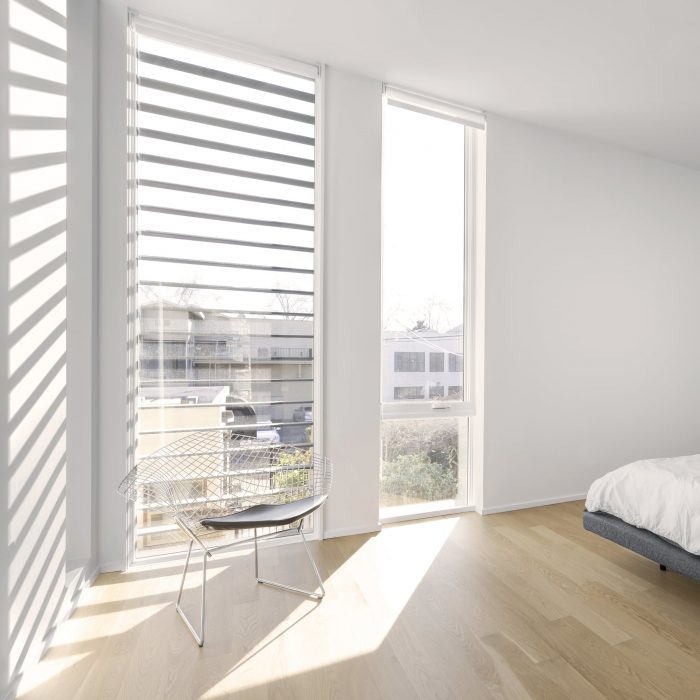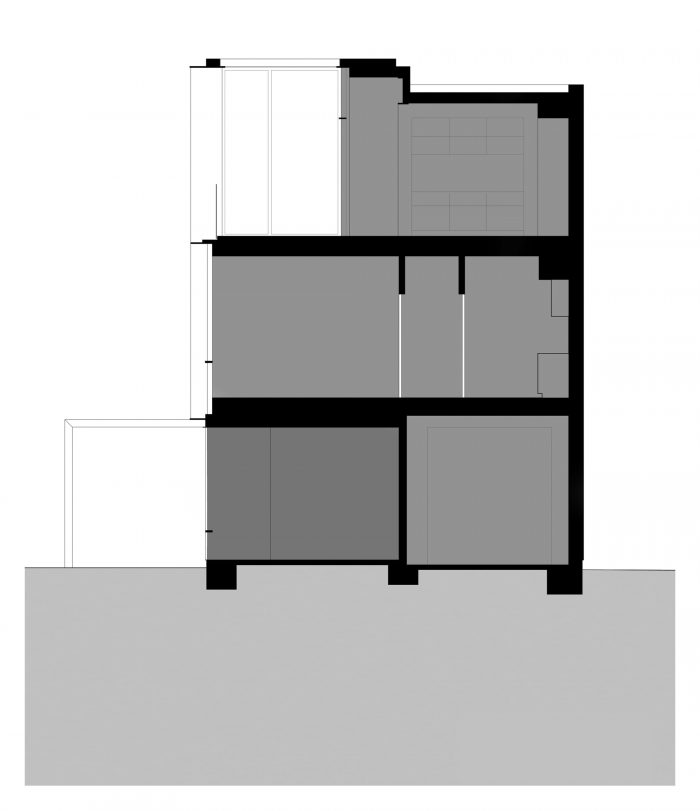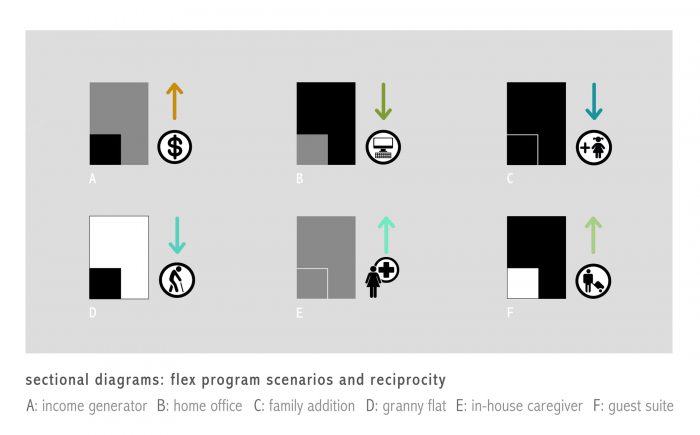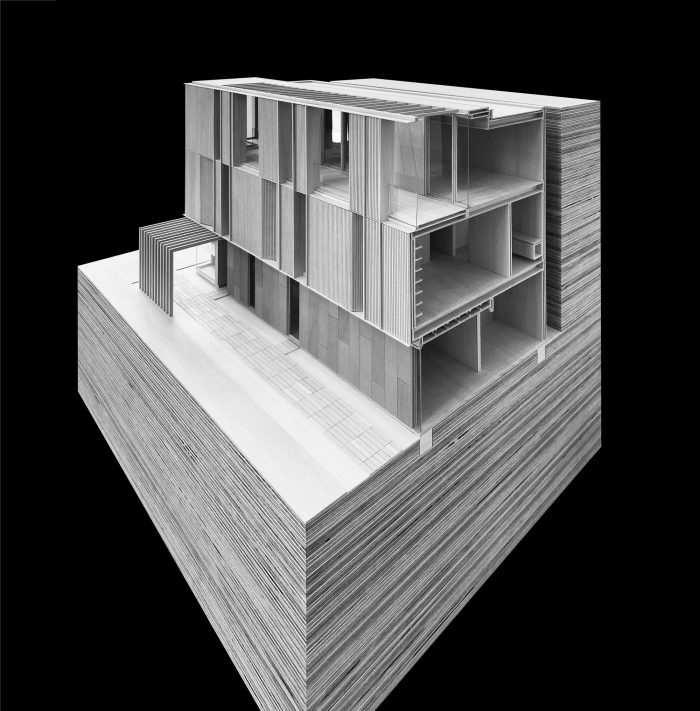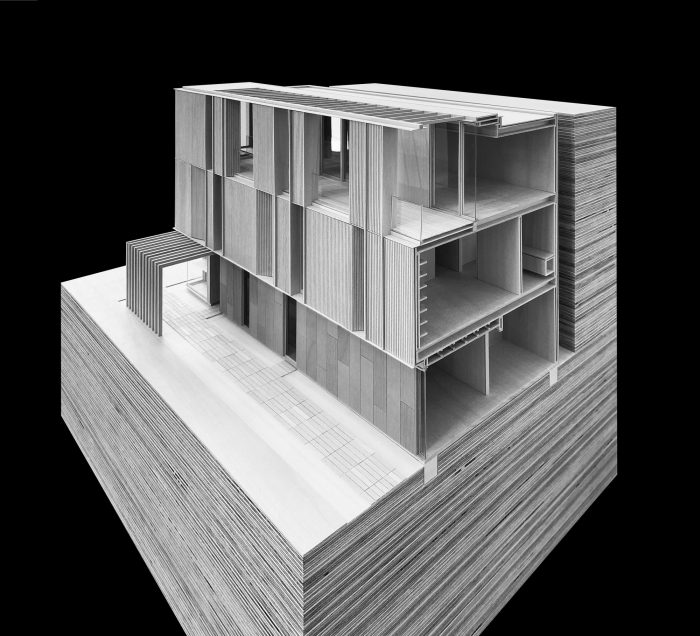Flex House是一个城市填充项目,占据了一块长期空置的地块,与现有的公寓楼接壤,标志着萨克拉门托林荫公园社区的边缘。该项目主要是为一个年轻的四口之家设计的,但也是为了适应不断变化的生活环境而特意设计的,三层楼的Flex House在上面两层为家庭的主要住所,与一个独立的但在程序上对等的底层单元,为住宅或商业用途提供适应性空间。
Flex House is an urban infill project occupying a long-vacant parcel bordered by an existing apartment building that marks the edge of Sacramento’s Boulevard Park neighborhood. Designed primarily for a young family of four but purposefully planned to accommodate the ever-changing circumstances of life, the three-story Flex House pairs the family’s main dwelling on the upper two floors with a separate but programmatically reciprocal ground-floor unit that offers adaptable space for residential or commercial uses.
作为一个整体,这栋3000平方米的建筑能够应对未来家庭组成、生活方式偏好和财政资源的变化:灵活和完全无障碍的临街单元层可以作为业主的专业办公室或出租给其他商业租户;它可以转化为老年父母的 “奶奶公寓 “或转变为可出租的公寓,产生补充收入;它可以作为来访的成年子女及其后代的客人套房,甚至变成一个完全集成、永久扩展的高层住宅。
As a whole, the 3,000 SF building is able to respond to future permutations in family composition, lifestyle preferences, and financial resources: the flexible and fully accessible street-level unit level can serve as the owner’s professional office or leased to other commercial tenants; it can be converted into a “granny flat” for an elderly parent or transformed into a rentable apartment that generates supplemental income; it can serve as a guest suite for visiting adult children and their offspring or even turned into a fully integrated, permanent expansion of the upper-level dwelling.
该建筑的相关方案以两种互补的、相互交错的形式表现出来。一个L形的钢结构基座包含了灵活的一楼单元和一个串联的车库,并作为一个服务脊柱与略微悬臂的两层木箱一起升起,该木箱是家庭住宅的所在地。一个连续的C型槽创造了一个深深的水平空间,将钢和木的体量分开,然后转化为高大的百叶窗,突出了两者之间的垂直分隔。
The building’s correlative program is expressed in two complementary, interlocking forms. An L-shaped, steel-clad plinth contains the flexible first-floor unit and a tandem garage and rises as a service spine alongside the slightly cantilevered, two-story wood box that houses the family residence. A continuous C-channel creates a deep horizontal reveal separating steel and wood volumes before transforming into tall, louvered apertures that accentuate the vertical separation between the two.
在人行道上,一系列细长的柱子和钢梁从水平的立面通道延伸出来,形成一个有棚的门廊。从这里,游客可以进入主前庭,用楼梯通向上面两层,或者通过一个穿孔的金属门,进入一个独立的入口门,进入一楼的灵活空间。主住宅的组织有意颠覆了两层住宅的传统程序分布,将起居室和厨房放在建筑的最顶端,而单元的三个卧室则在下面的楼层。
At the sidewalk, a series of slender columns and steel beams extend from the horizontal facade channel and form a trellised portico. From here, visitors can either access the main vestibule with stairs leading up to the two upper floors or pass through a perforated metal gate and proceed to a separate entry door into the first-floor flex space. The organization of the main dwelling intentionally flips the conventional program distribution of two-story homes upside down, locating the living hall and kitchen at the very top of the building and the unit’s three bedrooms on the floor below.
高处的优势为起居室–家庭生活的中心–提供了不受阻碍的城市天际线景观。从两层楼高的木质建筑中雕刻出来的线性屋顶露台与起居室平行,并作为室内空间的遮蔽性户外扩展。
The elevated vantage affords the living hall – the center of family life – unencumbered views of the city skyline. A linear roof terrace carved out of the two-story wood volume runs parallel to the living hall and functions as a shaded outdoor expansion of the interior spaces.
基座微妙的黑色氧化物钢板构成了视觉上引人注目的耐用的街道建筑表皮,其金属的坚固性让人联想到西边邻近的商业建筑。相比之下,上面的家庭住宅是用垂直的雪松覆盖的,这是对东边的历史住宅的木板护墙板的点头。
The plinth’s subtly variegated black-oxide steel panels form a visually arresting and durable street-level building skin, its metallic robustness evocative of the neighboring commercial buildings to the west. In contrast, the family residence above is clad in vertical cedar, a nod to the clapboard siding of the historic homes to the east.
两层楼的木箱的周边是由一系列长短不一的厚墙段组成的,它们的垂直边缘间歇性地斜接,以突出建筑围墙的非凡深度。连续的白漆钢板与木质外墙相辅相成,并将其联系在一起,建立了一个细线网络,在水平方向上为各个木墙提供框架,并提供垂直基准线作为变化的墙体的静态对位。
The faceted perimeter of the two-story wood box is composed of a series of thick wall segments at varying lengths, their vertical edges intermittently mitered to accentuate the building enclosure’s extraordinary depth. Continuous, white-lacquered steel plates complement the wood façade and tie it together, setting up a network of thin strands that frame the individual wood walls horizontally and provide vertical datum lines as a static counterpoint to the shifting walls.
Architects: Johnsen Schmaling Architects
Area : 3000 m²
Year : 2021
Photographs :Justin Lopez
Manufacturers : C.R. Laurence, Blanco, Ikea, Iris Ceramica, Kohler, Wiemann Metalcraft
Principals In Charge : Brian Johnsen, Sebastian Schmaling
Project Manager : P.J. Murrill
Project Team : Andrew Cesarz, Ben Penlesky
City : Sacramento
Country : United States

